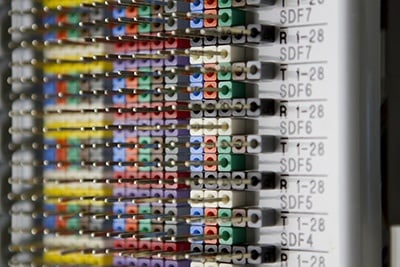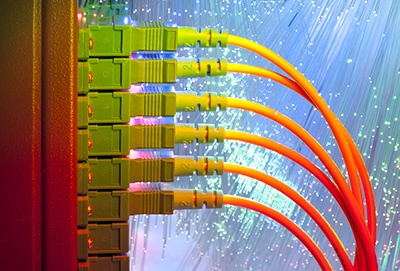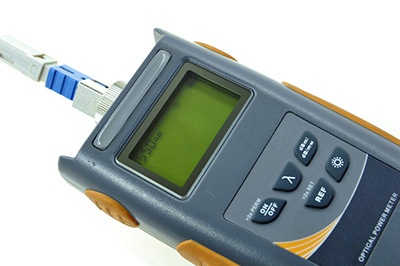 In the high-tech telecoms world, the credit for new advances often goes to smart scientists and busy entrepreneurs. However, there is a group of people without whom the whole interconnected machine would fall apart. These are the men and women that generate the standards – the norms – to which a particular item performs and perhaps, even more importantly, defines its interface with other parts of the system.
In the high-tech telecoms world, the credit for new advances often goes to smart scientists and busy entrepreneurs. However, there is a group of people without whom the whole interconnected machine would fall apart. These are the men and women that generate the standards – the norms – to which a particular item performs and perhaps, even more importantly, defines its interface with other parts of the system.
Most people in the industry have heard about the different standards bodies, but exactly who are these people, what do their organizations do and how do they operate? This blog post aims to shed light on the whole area of standards for fiber cable and provide an introduction to the benefits they provide.
ITU-T activity
Taking the widest frame of reference the International Telecommunications Union (ITU), addresses the system wide issues of interoperability. Within that organization it is the ITU-T that addresses the fixed line market (as opposed to radio issues – which are covered by the ITU-R).
Representatives from more than 100 nations take part in the ITU-T, developing and publishing ‘Recommendations’. These are strictly advisory documents on networks, protocols, signaling and to a lesser degree, individual products. The term "recommendation" belies the huge significance of these documents since, in the real world, they must be used to enable one operator to connect to another.
Since the task is so large, ITU-T is split into a number of Study Groups (SG) which address topics such as outside networks, transmission (for example, PONs) and signaling, as well as specialist issues such as sub-sea networks. Attendees are chosen by their host national committees (BSI in the UK, DIN in Germany and EIA/TIA in the USA, for example). For optical fiber and cabling, SG 15 is of most interest - it has pioneered the performance specifications for the current major optical fiber types, G.652 through G.657.
The International Electrotechnical Commission (IEC) and its role
The International Electrotechnical Commission (IEC) is the organization that takes the closest look at individual components in networks. Organized into Technical and Sub Committees, the IEC SC 86A Working Groups 1 and 3 address optical fiber and optical cables respectively. There is some scope for confusion with ITU-T, for example in the case of optical fiber. Standard fiber, which is known under the ITU-T heading of G.652D is classified by IEC as IEC 60793-2-50 B1.3; perhaps it’s easy to see why such fiber is almost universally known as G.652D!
 However, there are reasons for the apparent clumsiness of IEC terminology:
However, there are reasons for the apparent clumsiness of IEC terminology:
- IEC is structured differently to ITU-T because it needs to address the details of individual yet interconnected components
- It also produces standards rather than recommendations and these are numerically connected
- Finally, the role of IEC is to create internationally agreed test methods to determine the parameters it specifies.
So, IEC 60794 is the parent specification for optical cables and IEC 60794-1-1 is the top level document detailing ‘general’ issues. IEC 60794-1-2 then lists the considerable number of cable test methods with other documents in the IEC 60794-1-2’X’ series outlining specific types of test; for instance, IEC 60794-1-21 shows how to conduct mechanical testing.
Standards across the globe
 It was originally intended that ITU-T and IEC standards would become ubiquitous. In terms of ITU-T protocols, this ambition was largely achieved. No system vendor launches a global product (or one that is connected to other global products) without referring to its documents. IEC has gone a long way towards achieving the same for product specifications but is not there yet.
It was originally intended that ITU-T and IEC standards would become ubiquitous. In terms of ITU-T protocols, this ambition was largely achieved. No system vendor launches a global product (or one that is connected to other global products) without referring to its documents. IEC has gone a long way towards achieving the same for product specifications but is not there yet.
In the USA especially, ANSI and TIA continue to develop important documents. This is in part due to tight national regulation of installers by organizations, such as BICSI. A recent example is the TIA 942 standard covering datacenter installations.
The International Organization for Standardization (ISO) occasionally figures in the telecommunications world. It is a voluntary body which specializes in systems and materials, rather than telecommunications. However, there is one very significant series of standards published jointly with IEC that addresses cabled data networks, ISO/IEC 11801.
How can standards be used?
It’s important to stress that the use of standards is not usually mandatory. There is an exception within the European Union in that for major tenders it is obligatory to reference the relevant European product specification, produced by CENELEC. Helpfully, most CENELEC and IEC specifications covering the same product have similar or identical content.
In the USA, the situation is also more formalized and mandatory. Telcordia and UL, both large private sector approval and certification organizations, develop standards and assist customers in testing to them. Their specifications are comprehensive and so represent a significant cost to those submitting for approval. Such approvals also require a reasonable time budget running to several months in many cases.
For other users, and for trade around the rest of the globe, the principal use of these standards is in producing contract tenders, in assuring reliable and safe interconnection between users and in arbitrating any disputes between vendor and customer in the case of product performance.
From the point of a network planner or installer, standards have three main uses:
- Standards give a certain quality and performance guarantee beyond the typical manufacturer guarantee. Essentially you know that certified products will meet set criteria – you are not relying solely on what the manufacturer tells you.
- Standards for fiber help identify the mechanical and environmental aspects of a product, enabling you to separate robust solutions from inferior fiber cable and help to give peace of mind that cables will be fit for purpose in their given environment.
- Standards can be used to compare different cable parameters and performances on a level playing field, so can be used to justify upgrades and line changes.


